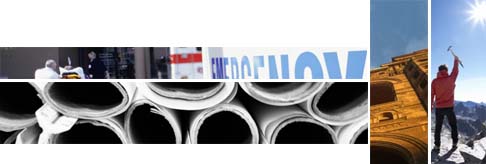Who rules the earth? Peripheral vision. A new type of architectural school. Why design matters. Endowment for rural communities.

Who rules the earth. Steve Prince, managing principal of HMC Architects, explores the idea of who rules the earth, stemming from interest of Paul Steinberg’s book, “Who Rules the Earth? How Social Rules Shape Our Planet and Our Lives,” to be published by Oxford University Press in 2014. The book is part of The Social Rules Project, an environmental sustainability advocacy.
Prince, who connected with the project because of its environmental sustainability initiative, awarded a $5,000 grant to support the Social Rules Project, which seeks to create new and innovative ways to bridge academia and real world challenges, and to empower students to make a positive impact on the planet.
On the periphery. Linnaea Tillett, an environmental psychologist, lighting designer and principal of Tillett Lighting, writes about how lighting can affect the way people feel in a room where they’ll be performing different kinds of tasks.
Tillett says this affect comes from the periphery of your vision—the “fringe of your focus”—and it determines how you feel in a particular space. People absorb much of the affect without being acutely aware that they are doing it through what we variously call the co-conscious, unconscious, or just the “noise around us”.
A new type of architecture school. Robert Kwolek blogs on how he would like to create his own private school of architecture, offering a complete alternative to existing programs in which the worlds of architecture, urban planning, landscape architecture, and carpentry would be melded.
Kwolek says that despite having graduated from an architecture program, he still doesn’t feel significantly more capable of constructing his own building. He says that most contemporary architecture programs “are very insular, with little regard for preparing students for the real world.”
Via Sustainable Cities Collective
Why Design Matters. Tom Ito, a principal in Gensler’s Los Angeles office, blogs about how staying at the hotel Oberoi Amarvilas in Agra, India, made him reflect on the power of design.
“Everything about my journey into the hotel (and approaching nirvana) was designed. It was “guest experience” planned and supported by the landscape, the architecture and the interiors for the purpose of giving me a lasting memory of this hotel and—bigger picture—the brand. It worked.” – Tom Ito
Endowment for rural communities. The new Citizens’ Institute on Rural Design (CIRD), a partnership between the National Endowment for the Arts, U.S. Department of Agriculture, Project for Public Spaces, and other organizations, is looking for proposals from rural communities who need design help. Winners will receive a $7,000 grant and technical assistance valued at $35,000.
CIRD helps rural communities with fewer than 50,000 people. Through facilitated design workshops, CIRD aims to “enhance the quality of life and economic vitality” of these places.
Via The Dirt


 Vision for healthcare environments. Wish list for placemaking. Walkability in Mumbai. Sustainability with e-waste.
Vision for healthcare environments. Wish list for placemaking. Walkability in Mumbai. Sustainability with e-waste.  We read a lot of blogs from design and planning firms. When we surveyed the A/E industry in 2011, only 16% of our respondents were blogging. This number has certainly gone up, but more importantly, so has the quality. The blogs that consistently post interesting content bring readers back for more. These contribute new ideas and perspectives to the public, and on a broader level, they add to the laypersons’ understanding of the related professions’ role in our communities and society as a whole.
Many firms still don’t see the value of blogging and I hope we’ll see more converts to this form of communication in 2013. Blogs are more than an outlet for project descriptions and photos. They help your public audiences get a better sense of what your firm is about and the quality of ideas that you’ll bring to the table. When the practice of blogging is interwoven into the firm’s routine of work, the blog quickly becomes a collection of relevant content on topics that vary as much as the personalities within the firm itself. This content is also immensely valuable to search engines which favor newly published content – making it easier for outsiders who are looking for information on the topics covered in your blog to find your post. These encounters can the beginning of new relationships and opportunities.
We read a lot of blogs from design and planning firms. When we surveyed the A/E industry in 2011, only 16% of our respondents were blogging. This number has certainly gone up, but more importantly, so has the quality. The blogs that consistently post interesting content bring readers back for more. These contribute new ideas and perspectives to the public, and on a broader level, they add to the laypersons’ understanding of the related professions’ role in our communities and society as a whole.
Many firms still don’t see the value of blogging and I hope we’ll see more converts to this form of communication in 2013. Blogs are more than an outlet for project descriptions and photos. They help your public audiences get a better sense of what your firm is about and the quality of ideas that you’ll bring to the table. When the practice of blogging is interwoven into the firm’s routine of work, the blog quickly becomes a collection of relevant content on topics that vary as much as the personalities within the firm itself. This content is also immensely valuable to search engines which favor newly published content – making it easier for outsiders who are looking for information on the topics covered in your blog to find your post. These encounters can the beginning of new relationships and opportunities.